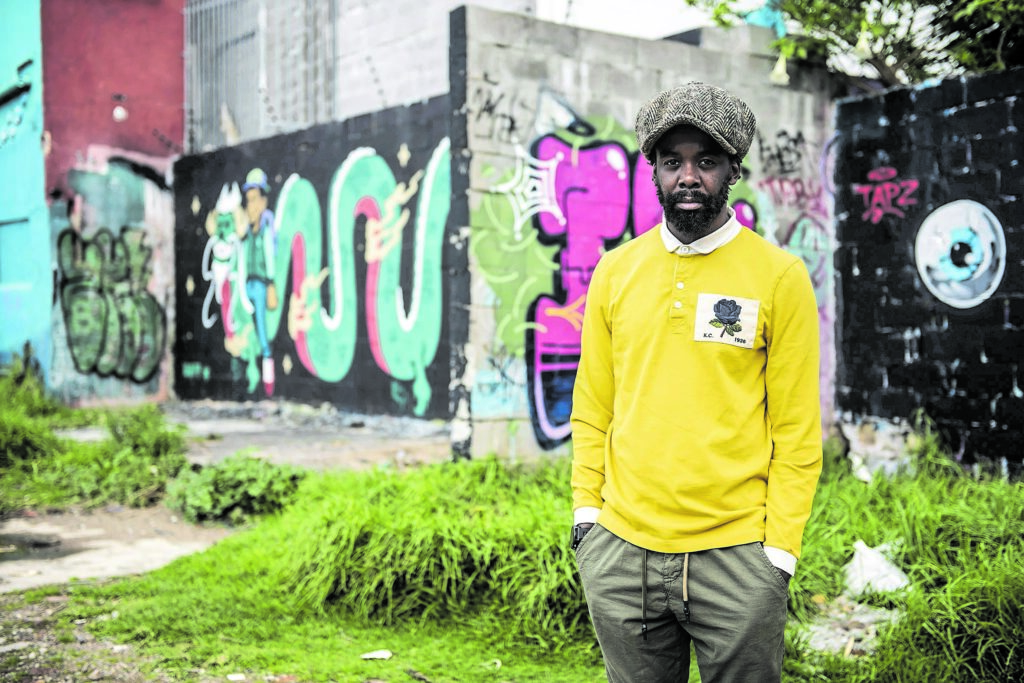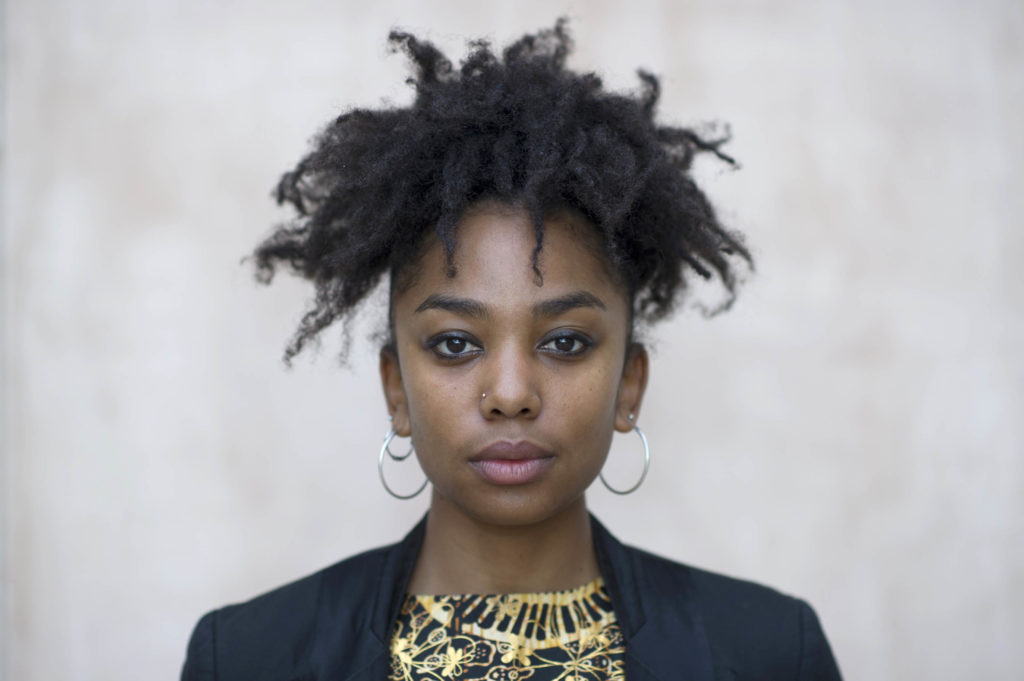Responding to provocations: (from left) Artwork from season seven at the Centre for the Less Good Idea (Stella Oliver)
On March 26, a few hours before South Africans began a government-decreed 21-day lockdown to slow down the spread of the coronavirus, musician Mandisi Dyantyis and his band live-streamed a concert from the Living Room, a live music venue in Cape Town.
“We know that hundreds of you are really upset to be missing the Cape Town International Jazz Festival [CTIJF] performance, and so are we,” a blurb on the ticketing website Quicket read. “So we have decided to perform the entire CTIJF set for you. And we will stream it live on YouTube, so that you can watch it in your own home.”
The initial date for the livestreaming had been Friday March 27, which Dyantyis and his team revised when the lockdown was announced, suggesting that they were not responding directly to the lockdown as such, but finding ways of softening the blow of cancelled concerts.
The band went to great lengths to recreate the feel of a live concert (hence their confidence in charging a R100 “per household” ticket price). The subsequent scenes on social media platforms showed that the usual fervent vibes of a Dyantyis concert could be transmuted from a concert venue into the home.
 Musician Mandisi Dyantyis, who organised a livestreamed concert just before the lockdown (David Harrison)
Musician Mandisi Dyantyis, who organised a livestreamed concert just before the lockdown (David Harrison)
But the show, thanks to the timing of events, ended up taking on the feel of the proverbial last party before lockdown. “Part of its success was that people were going into the unknown,” Dyantyis says. “There was anxiety about that and they needed an avenue to forget and to connect to something else.
“Even with us in the room, all of us were playing our last gig in a while, even the guys who were working the stream. Everyone involved wanted it to be a success, not to mention the guys selling the tickets. They were worried about, ‘Will everyone be able to get to the gig on time? Will the link work?’, because it’s those teething problems that can get in the way. But everyone was on their A game because of what was about to happen.”
Dyantyis says that when the concert began, just more than 400 tickets had been sold, but the numbers swelled as the clock ticked. By the time the concert ended, it seemed the numbers had increased dramatically, especially if one checked out the posts of people sitting in groups of three or more, mere moments before the deadline.
Although many artists have connected with their audiences via online platforms such as Facebook and Instagram Live, many of the events have either been live DJ sets or solo free performances. “I think the thing about it is that it costs money [to set up]. The big thing is the quality of the stream. You’re not gonna say, ‘Buy tickets, see me live in your living room’, and then you have a poor streaming vibe,” Dyantyis says. “You need good sound. You need what you’d need for a gig, and then the streaming as well. Musicians know about these things, they are very hip, but you need to spend on it for it to be what it needs to be.”
Dyantyis says that in the face of the lockdown and its attendant cash-flow problems, he feels musicians were faced with two choices; either being “shocked into recoiling” or “shocked into seeing the opportunities… This [the livestream] is now something we know is in our arsenal. We just have to find other tasteful ways of doing it,” he says.
Although music might easily lend itself to streaming, staging theatre can present a number of unique challenges. When restrictions surrounding the coronavirus hit, the Maboneng-based Centre for the Less Good Idea was left considering ways to translate performances for iPads and desktops. It didn’t help, or perhaps did, that the seventh season was responding to two “provocations” — one exploring new ideas when it came to performing text and another responding to Pepper’s ghost, which is an illusion technique for creating reflected images developed by John Henry Pepper in the 19th century.
“We didn’t have to reform a lot, but think about the best way the works can exist in the same form but in an online presence,” says Phala O. Phala, the animateur of the Centre for The Less Good Idea, who co-curated season 7 with William Kentridge. “We also had to do some editing and involve multiple cameras and all that. We normally have an in-house cinematographer, but we needed other people to help with that, so as to have many ways of capturing the moments.”
Although it is a popular perception that much of the tactility of theatre is lost when remoteness is factored in, Phala subscribes to a more complex view. “People think theatre abhors technology. Lighting, electricity, set design and the mechanics of staging involve technology. Theatre has always found ways of incorporating technology, through projection and so on — these are things theatre has always been grappling with.
“Right now people are holding on to the form in its purest, but I think a conversation between the medium and the form can breed something new without changing the form. For example, [the consumption of] TV has largely changed but the shooting and dramaturgy involved still remain the same.”
For Lindiwe Matshikiza, a theatre-maker who has also explored other forms of storytelling, such as film, “there is no replacement for live performance”, but this interregnum has offered her a chance to ponder this question further.
 Online innovations: Theatre-maker Lindiwe Matshikiza (Gareth Cattermole)
Online innovations: Theatre-maker Lindiwe Matshikiza (Gareth Cattermole)
“The styles are too different for me,” she says. “Theatre is as much about who you’re sitting in the dark with, collectively witnessing, watching and simultaneously meditating alone and together. Watching it through a screen is something different. I don’t say bad or good — there’s a lot we’re gonna find out, I imagine — but, for me, it’s always a huge disappointment to try to watch theatre as though it is a film.”
Galleries too, have been thrust into new ground, slowly working their way through the trade-offs the new circumstances call up. The Standard Bank Gallery’s current exhibition Lumières d’Afriques, featuring 54 artworks from 54 different countries, exists on multiple platforms, with the virtual gallery seeming to arrive just in time for the coronavirus restrictions. “The virtual gallery has been an existing part of the Standard Bank arts portfolio strategy, in par with trends and developments happening in the sector,” says gallery manager Dr Same Mdluli. “The virtual gallery initially launched with David Koloane [the exhibition titled A Resillient Visionary: poetic expressions of David Koloane] with the aim of extending the exhibition to audiences that may not have had the opportunity to see it in person. But it was also envisioned as an archival and cataloguing method that could live online long after the exhibition has closed.”
Of their attempts to connect with viewers in this time of crisis, Goodman gallery’s Robin Scher says: “The additional material and information provided by the virtual experience of an exhibition offers audiences an enhanced experience that can enrich their appreciation and understanding. Despite the limitations currently placed on galleries, the need to push on these fronts has led to some very exciting innovations that are now becoming part of the industry. That said, it’s unlikely going to replace or trump the act of visiting a gallery, but will hopefully improve the experience.”
“It was important to create a user journey that had a seamless transition from the physical to the virtual space. This entailed creating a narrative that is, in some sense, curated to make the journey easily accessible and user friendly for the viewer. Unlike a visitor walking through the space and having the freedom to move in any direction they please, with the virtual experience it was important to, in a way, pre-empt how the user is likely to navigate the journey using the matte dots provided.”
The gallery is quickly playing catch up after being caught on the back foot. “As a business that relies on the physical experience of viewing artwork, the need to translate this online was urgent. In a few short weeks, we’ve set up online viewing rooms for a 3D virtual version of the exhibition How To Disappear in Johannesburg. In terms of stuff coming up: this week, we’ll be streaming a studio visit with artist Mikhael Subotzky, who was recently in quarantine following a trip to Atlanta for a Magnum photo residency. On Saturday, we’ll be holding a live conversation with a panel of experts on the topic of surveillance that will be streamed on our Facebook page. And in two weeks, we’ll be hosting a week-long Shirin Neshat film festival online.”
All of these experiences offer an exciting journey for the viewer in isolation, but questions about the quality of the experience remain for all of us at the other end of the tunnel.
How To Disappear is currently showing at the Goodman Gallery. Check the gallery’s website for virtual viewing details.
Season seven at the Centre for The Less Good Idea runs until April 6.